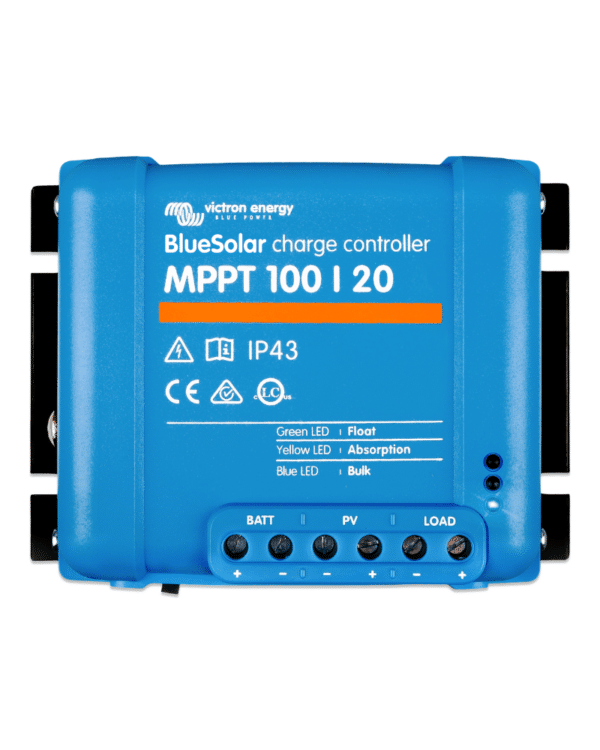
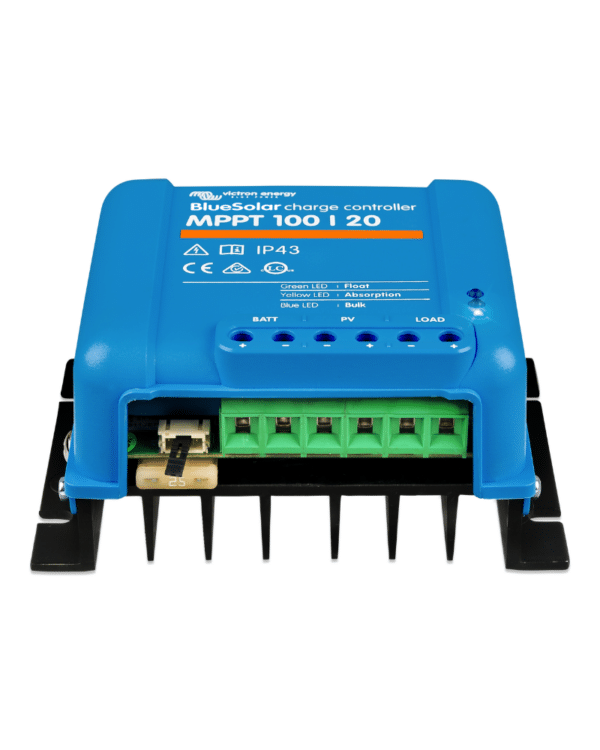

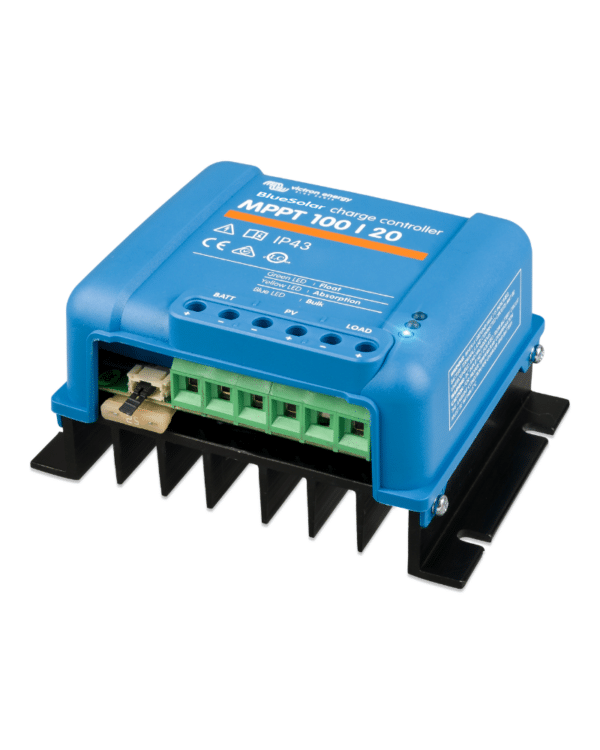
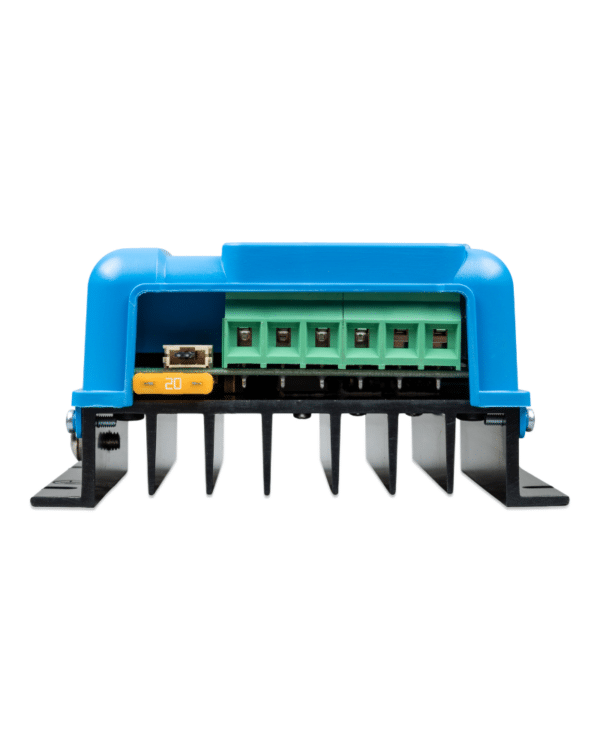
Victron Energy BlueSolar MPPT 100/20 (up to 48V) Retail
Original price was: $86.00.$73.10Current price is: $73.10.
- Maximum Power Point Tracking Solar Charge Controller
- Programmable Battery Charge with Intelligent Management
- 100V / 20A, Suitable for 12/24V Systems
- Remote Monitoring & Control
- Internal Temperature Sensor
- Direct Communication Port
- Real-Time Display via GX Device or Bluetooth-Enabled Smartphone (Victron Bluetooth Dongle Required to be Bluetooth Enabled)
- 5 Year Warranty Included
- Additional 5 Year Warranty available – 10 year total
A solar charger gathers energy from your solar panels and stores it in your batteries. Using the latest, fastest technology, BlueSolar maximises this energy harvest, driving it intelligently to achieve full charge in the shortest possible time. BlueSolar maintains battery health, extending its life.
PWM and MPPT charge controllers are both widely used to charge batteries with solar power. The PWM controller is in essence a switch that connects a solar array to the battery. The result is that the voltage of the array will be pulled down to near that of the battery. The MPPT controller is more sophisticated (and more expensive): it will adjust its input voltage to harvest the maximum power from the solar array and then transform this power to supply the varying voltage requirement of the battery plus load. Thus, it essentially decouples the array and battery voltages so that there can be, for example, a 12V battery on one side of the MPPT charge controller and panels wired in series to produce 36 volts on the other.
It is generally accepted that MPPT will outperform PWM in a cold to temperate climate, while both controllers will show approximately the same performance in a subtropical to tropical climate. Besides performing the function of a basic controller, an MPPT controller also includes a DC to DC voltage converter, converting the voltage of the array to that required by the batteries, with very little loss of power.
An MPPT controller attempts to harvest power from the array near its Maximum Power Point, whilst supplying the varying voltage requirements of the battery plus load. Thus, it essentially decouples the array and battery voltages, so that there can be a 12V battery on one side of the MPPT charge controller and two 12V panels wired in series to produce 36 volts on the other. If connected to a PV array with a substantially higher nominal voltage than the battery voltage, an MPPT controller will therefore provide charge current even at very high cell temperatures or in low irradiance conditions when a PWM controller would not help much.
As array size increases, both cabling cross-sectional area and cable length will increase. The option to wire more panels in series and thereby decrease current is a compelling reason to install an MPPT controller as soon as the array power exceeds a few hundred Watts (12V battery), or several 100 Watts (24V or 48V battery).
| Weight | 1.43 lbs |
|---|---|
| Dimensions | Length: 2.36 in Width: 5.16 in Height: 3.94 in |










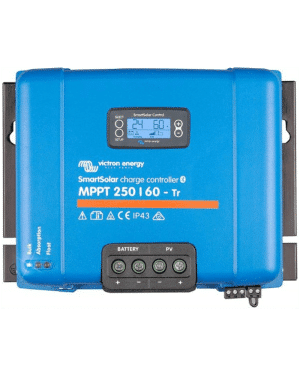
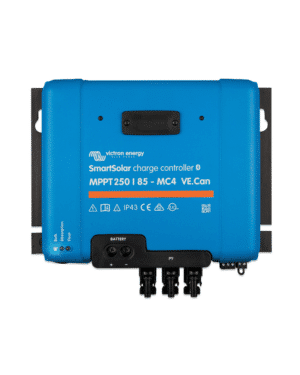


Reviews
There are no reviews yet.